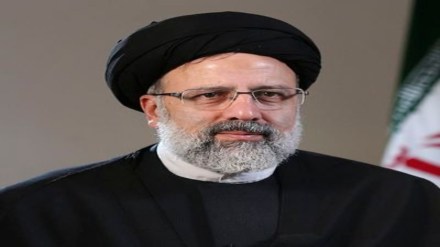Iran has confirmed the death of President Ebrahim Raisi following a helicopter crash in East Azerbaijan province on Sunday. Alongside Raisi, Foreign Minister Hossein Amir-Abdollahian and two other officials perished in the accident, which occurred due to adverse weather conditions. State television announced that Raisi, described as a “servant of the Iranian nation,” achieved “the highest level of martyrdom” while serving his country.
The crash site was located on Monday morning, marking the end of a massive search and rescue operation initiated after the helicopter lost contact during its flight from Tabriz.
Iran has publicly announced that four people, including President Ebrahim Raisi and Foreign Minister Hossein Amir-Abdollahian, were killed in the helicopter crash. Raisi’s helicopter went down in East Azerbaijan province on Sunday due to bad weather.
“The servant of the Iranian nation, Ayatollah Ebrahim Raisi, has achieved the highest level of martyrdom while serving the people,” state television said today. The incident occurred during President Raisi’s return flight to Tabriz after he and Azerbaijani President Ilham Aliyev inaugurated the Qiz Qalasi Dam on their shared border.
Ayatollah Ebrahim Raisi
Raisi, a significant figure in Iran’s political landscape, was well-regarded for his efforts to forge deep relations with China and Russia, significantly impacting Iran’s foreign policy. He played a pivotal role in negotiating the Chabahar Port deal with India and ending Iran’s international seclusion.
The Helicopter Crash
On Sunday, President Raisi’s helicopter went missing in Iran’s East Azerbaijan province after encountering severe weather. Initial reports suggested that the helicopter had made a hard landing at an unknown location. Relief and rescue teams were dispatched immediately, but due to the inclement weather, there was no trace of the helicopter for several hours. As the weather cleared on Monday morning, the crash site was located, and the tragic news was confirmed.
The helicopter, carrying the 63-year-old President Raisi, Foreign Minister Hossein Amir-Abdollahian, and other officials, lost contact approximately 30 minutes into the flight, sparking immediate concerns and a massive search and rescue operation. The severe fog and rain in the Dizmar forest, nestled between the cities of Varzaqan and Jolfa, hampered initial search efforts.
The crash also claimed the life of Foreign Minister Amir-Abdollahian, an experienced diplomat who was instrumental in securing the recent rapprochement between Iran and Saudi Arabia. As soon as Raisi’s helicopter went missing, a wave of concern and shock swept across Iran. Prayers for his safety were widespread, including from Indian Prime Minister Narendra Modi, who expressed his concerns on his social media account. Countries like Russia and Turkey offered to deploy specialized teams to assist in the rescue operations.
Raisi and his cabinet members were returning to Tehran after inaugurating a dam built with Azerbaijani assistance in East Azerbaijan Province. The president’s helicopter was one of three used for the trip; while the other two reached their destination safely, Raisi’s helicopter encountered severe weather mid-air, leading to the crash.
As news of the helicopter’s hard landing at an unknown location spread, Iran’s entire emergency response apparatus was mobilized. Despite the severe weather conditions, more than a dozen teams, equipped with ambulances, buses, and sniffer dogs, were dispatched to the possible crash sites. Videos of the search operation depicted the challenging weather conditions, with heavy fog and rain making the rescue efforts difficult.
Obituary
Raisi became the President of Iran in 2021 and was considered a close ally of Iran’s Supreme Leader, Ayatollah Khamenei. His tenure saw significant domestic and international developments, including increased ties with China and Russia and a stronger Iranian presence on the global stage. His administration also faced considerable internal dissent, particularly from Iranian women protesting against restrictive policies.
Iran’s Defence Might
During Raisi’s presidency, Iran’s military capabilities were highlighted by the deployment of Shahed drones in various conflicts, including the Ukraine war. He also oversaw Iran’s aggressive actions in the region, such as airstrikes in Balochistan, Pakistan, and a significant drone and missile attack on Israel, which intensified tensions between the two nations. These actions were part of Iran’s broader strategy to assert its influence in the Middle East and beyond.
Iran & Israel
Iran launched a major attack on Israel with drones and cruise and ballistic missiles on April 13, 2024. This attack was carried out in response to Israel’s drone attack on its embassy in Syria. This has led to an increased tension between the two countries and Israel has already warned that it will take revenge from Iran. A major reason for Israel’s conflict with Iran is the attacks by Hamas and Houthi rebels.
Israel alleges that at the instigation of Iran, Hamas had launched a major attack on Israel on October 7 last year. Besides, Yemen’s Houthi rebels in the Red Sea have also been accused of Iran’s support. For the last few months, Houthi rebels have turned the entire area into a war zone by carrying out a large number of drone attacks on warships and merchant ships of America and Britain, including Israel, in the Red Sea.
President Raisi’s death marks a significant turning point for Iran, with potential implications for its domestic politics and international relations. His leadership was characterized by both staunch conservatism and strategic diplomacy, leaving a complex legacy for his successors to navigate.
